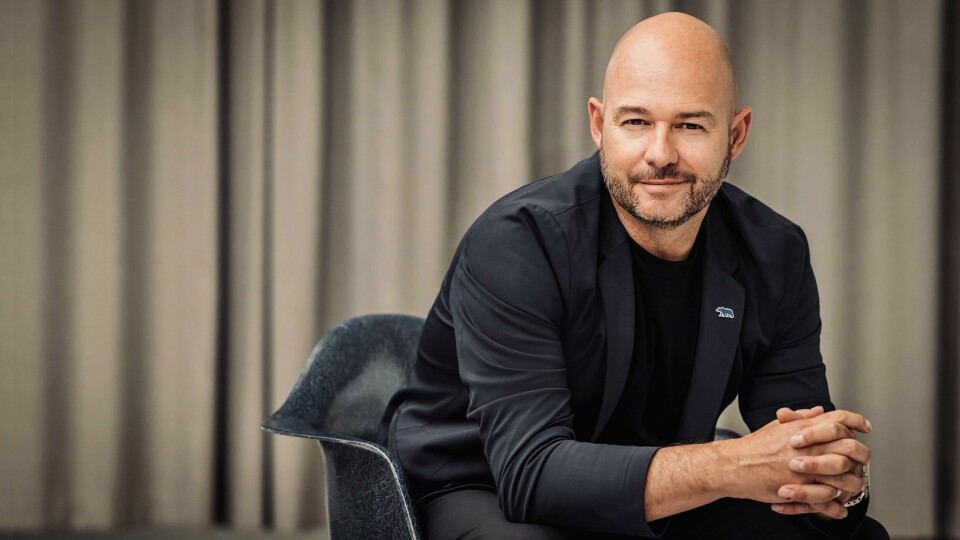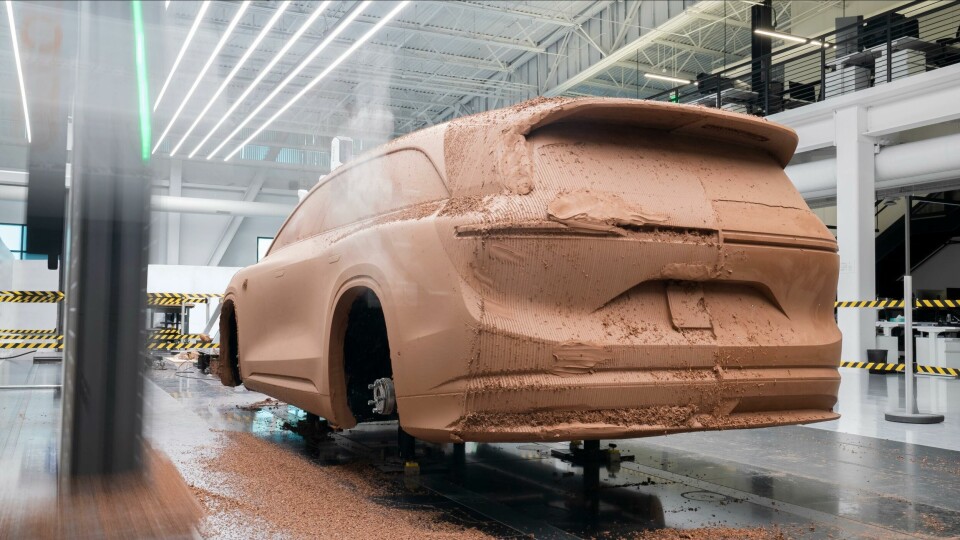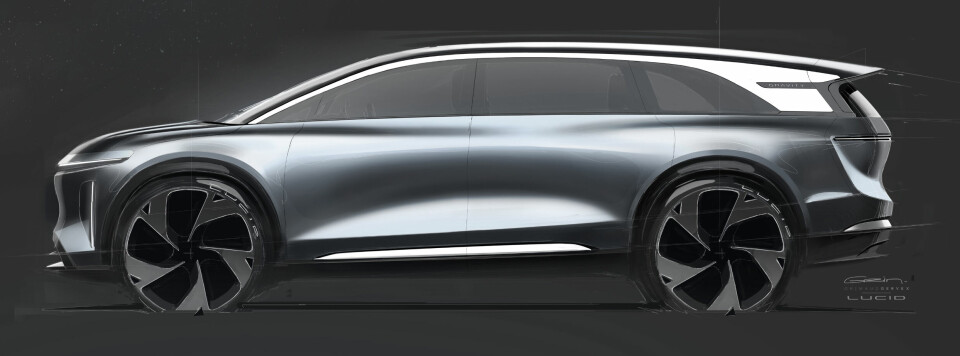
Car Design Review X: Derek Jenkins, Lucid
Lucid design boss Derek Jenkins shares his personal approach to design in this exclusive Car Design Review X interview
This year has been busy, to say the least. We’re finishing up the Lucid Air Sapphire, our ultra-high-performance, limited-edition model, which is ready for production. But of course, the big news is the launch of our SUV, Gravity, coming near the end of this year. Our engineering department has been testing prototypes in camouflage and here at HQ we have this mini scale line where we’re building bodies in white. All the production leads are training here and then we’ll take the teachings and the techniques to our factory in Arizona, scale it up, and we’ll have our Gravity line.
Although I can’t give you specifics yet, I can tell you that Gravity was designed to set the segment benchmark for range, efficiency and design. I’ve always been of the opinion that every three-row SUV has something missing, even in the premium luxury space. We looked at this as an opportunity to take the understanding of how SUVs have evolved and blend that with Lucid’s approach to EV technology and stellar attributes that truly matter: drivability, space and utility, range, and performance. The Gravity will be the quickest in the segment, and that means beating vehicles like the Lamborghini Urus and the Tesla Model X ‘Plaid’ edition. In the electric era people expect it all and to be able to give them that in an SUV is a big deal.

There’a been a rapid evolution in design over the last ten years. These SUV coupés were really freakish at the time, but now they’re everywhere and pushing the performance paradigm. But they’re barely SUVs. We had to make a conscious decision whether to gear the Gravity towards being more of an off-roader and sacrifice range, or to be true to our core value of efficiency. We decided on the latter: to bring best-in-class space and double down on performance. Aerodynamics is critical of course and we hope to hold the aerodynamic record for an SUV.
If anybody’s truly serious about efficiency, range, performance and interior space, they’re going to converge in a certain area in terms of silhouette. It’s largely physics. On the Gravity you’ll see a sleek A-post with a very long cabin, long tail spoiler and a relatively upright rear end. It was really important for the front end to be very strong; it couldn’t be too sloping like a Model X, it had to have that tough SUV look.
We want to let it live off the proportions
The overall stature of the vehicle is relatively low and the rest of the design language really takes a lot from the Air – really clean volumes in the front and rear, shoulder haunches, a clean rocker, a very honest simple clean front end and the clamshell rear end, which is not unlike the Air, but executed in an SUV format. I feel that gaping holes in exterior bodywork are from a past era. We want to go for a clean, flush, seamless quality and let it live off the proportions.
From the get-go with the Air, our interiors have been high-tech, yet relaxing and sophisticated, with a lot of influence from architecture and mid-century modern furniture design. The Gravity is very much the same, but we’re leaning in even more with the architectural influence. We’ve also managed to get the highest percentage of occupant space from a given footprint. The big difference in the Gravity is an architectural change. It’s a tweak that really improves multi-tasking and creates more accessible screen real estate, which is a challenge with almost any screen architecture that sits behind a steering wheel because of screen obscuration.

Everybody is looking for their path when it comes to screen architecture, but there’s no one way to do it. Finding what works for your particular brand is really important. It also ties into the experience you want provide. Is it more of an engaging driver’s car, or do you want it to be more of an appliance? In addition, we’re going to have much more powerful chip sets, which means things will run quicker and with more sophisticated graphics.
Customer feedback drives a lot of what we do and we’ve worked tirelessly to do regular software updates with the Air. We’ve moved some menus around, added some shortcuts, and introduced Apple CarPlay and Android Auto. Where we’re headed with the Gravity is where I wish we would have been with the Air. We’re putting a lot of effort into 3D real-time animation, using more AI, and thinking more about the learning capability of the vehicle to personalise things for the user.
The amount of extra time that went into this vehicle makes it unique… That’s going to pay off in the end
At Lucid, branding falls under the design department, which includes our retail studio spaces. This requires tremendous partnerships and I feel really proud of our customer experience. When I’ve been to a Porsche or Audi dealership they don’t have anything like that.
We have these emotional areas with the material and imagery of Californian landscapes and all the technology on display. We’ve also taken big steps recently to be more transparent about our pricing so people can immediately understand which is the base car, which is the mid-level car and so on. It’s the equivalent of walking into the Apple store and seeing the prices on the phones or the iPads. I think that’s helped us a lot and informs people what they get for their money.
It’s no secret we’ve had our challenges. Starting a company from scratch is no easy endeavour. Do I wish the Gravity had come out a year and a half earlier? Of course. We had to put a lot of focus on the Air and get that right. We have to create these platforms and create all this technology. As we mature as a company, we’ll be able to do a lot more of this in parallel rather than in sequence. That said, the amount of extra time and research and development that went into this vehicle makes it unique in the market. I think it’s going to pay off in the end.



